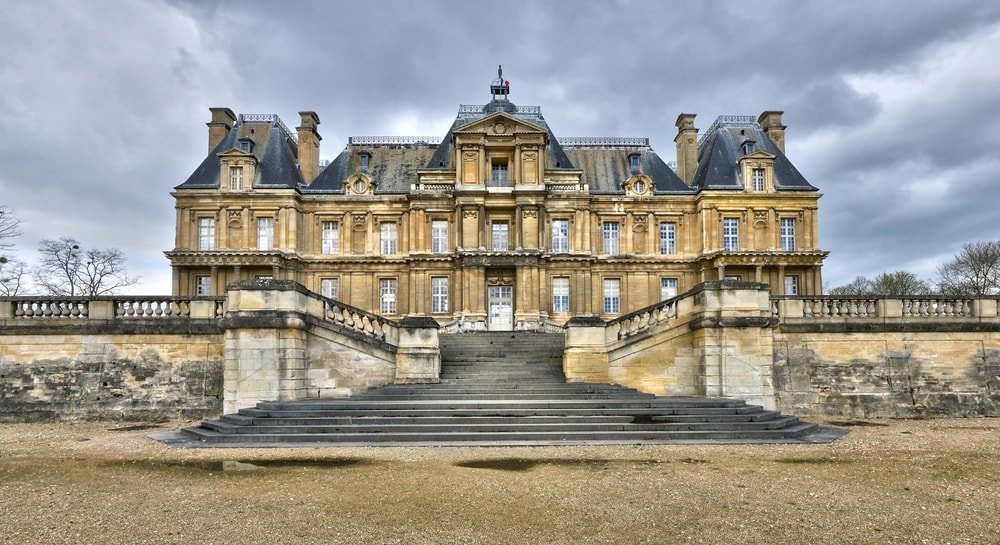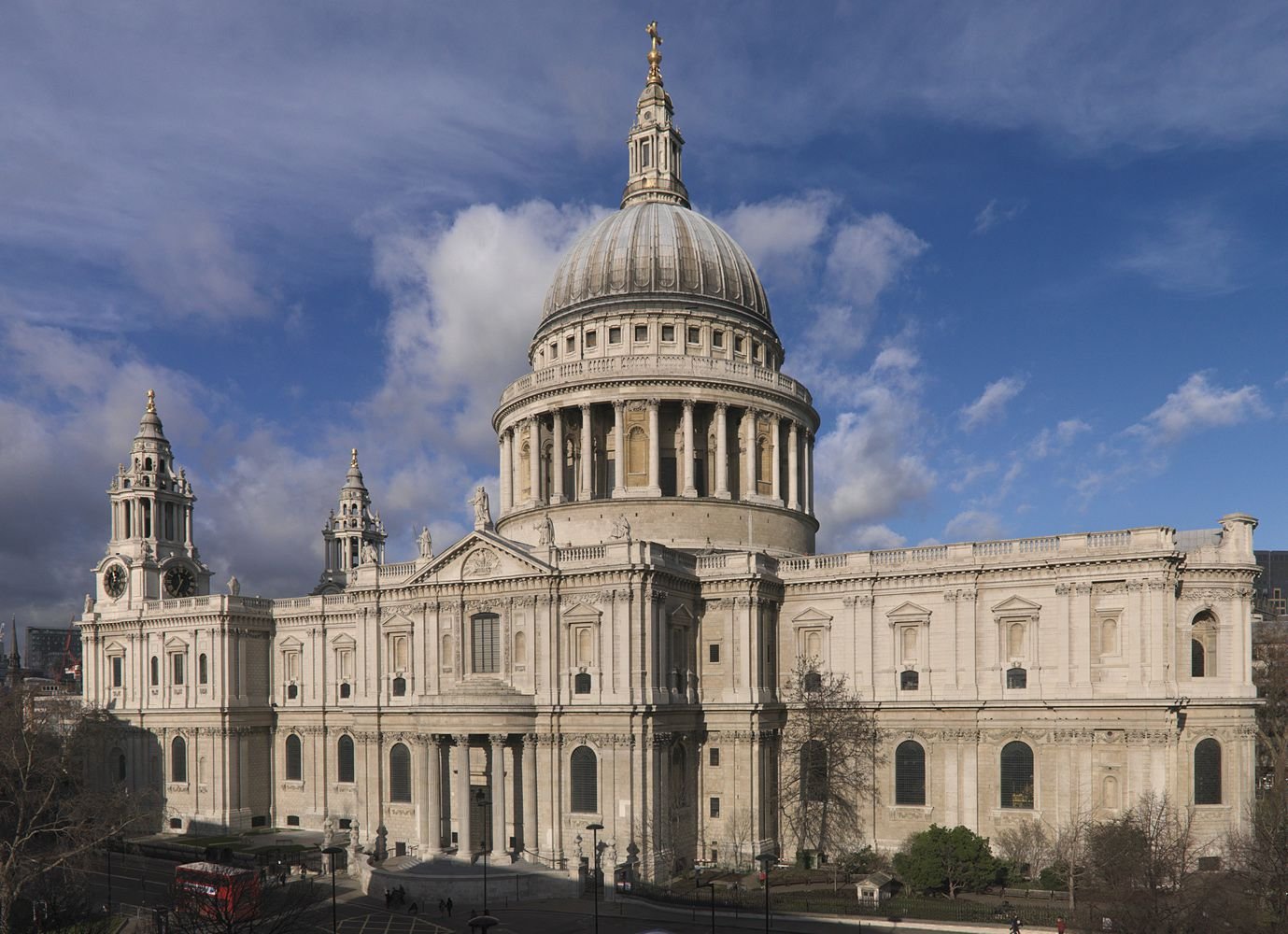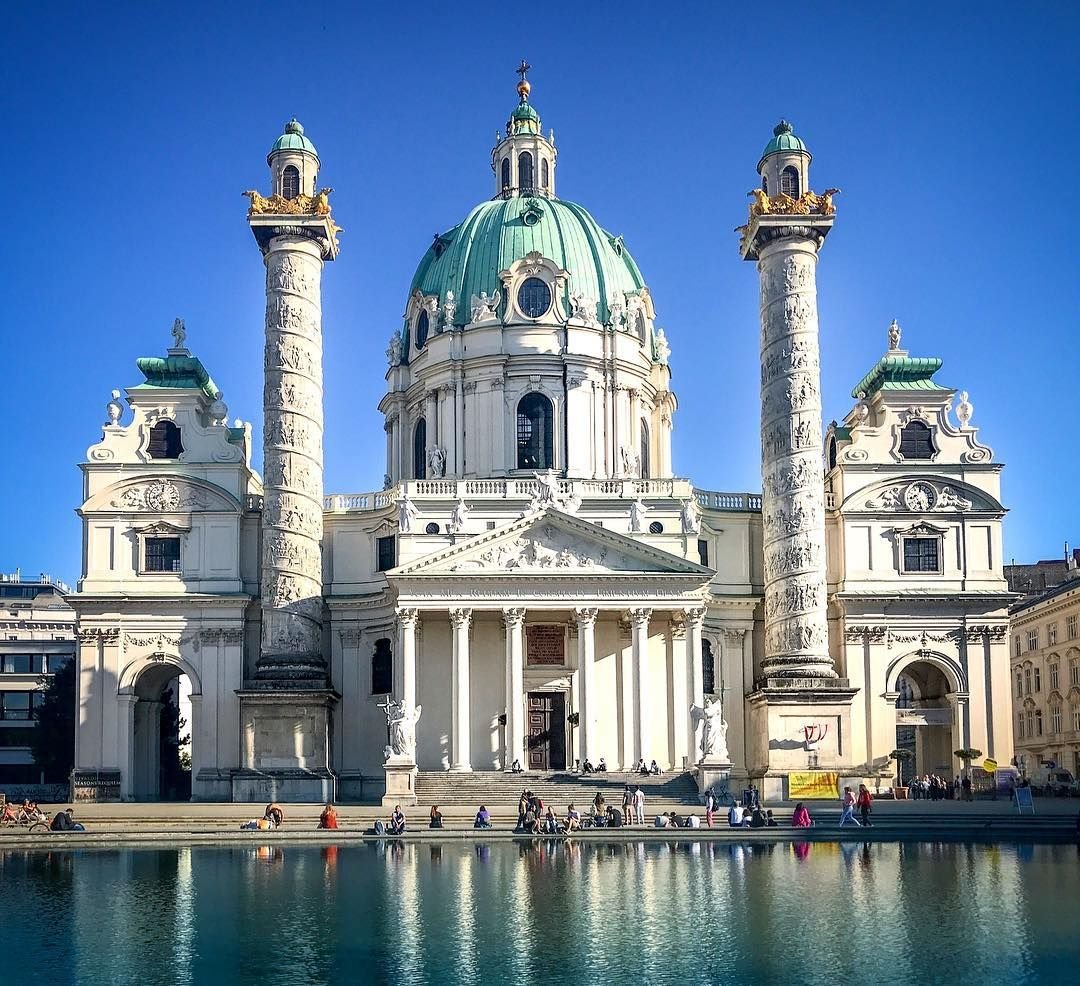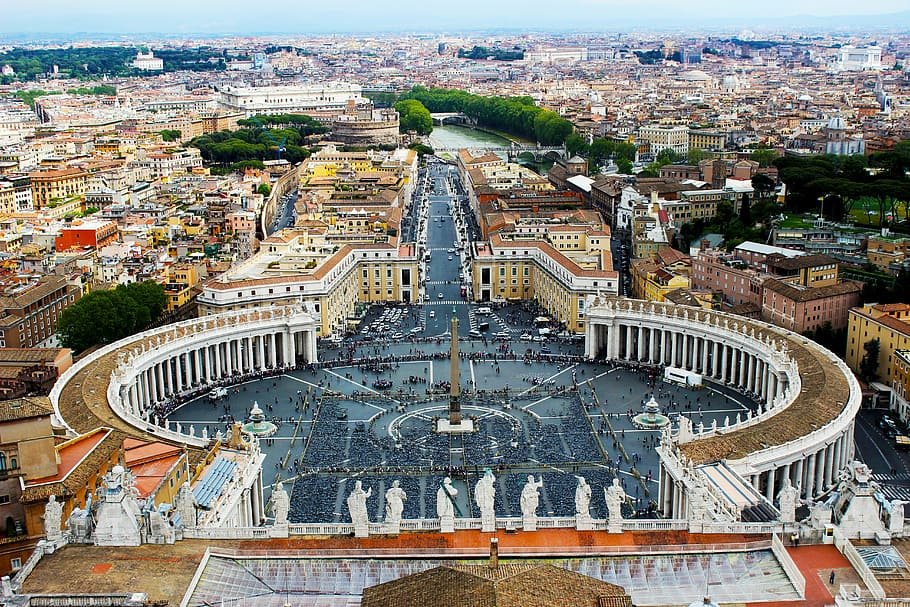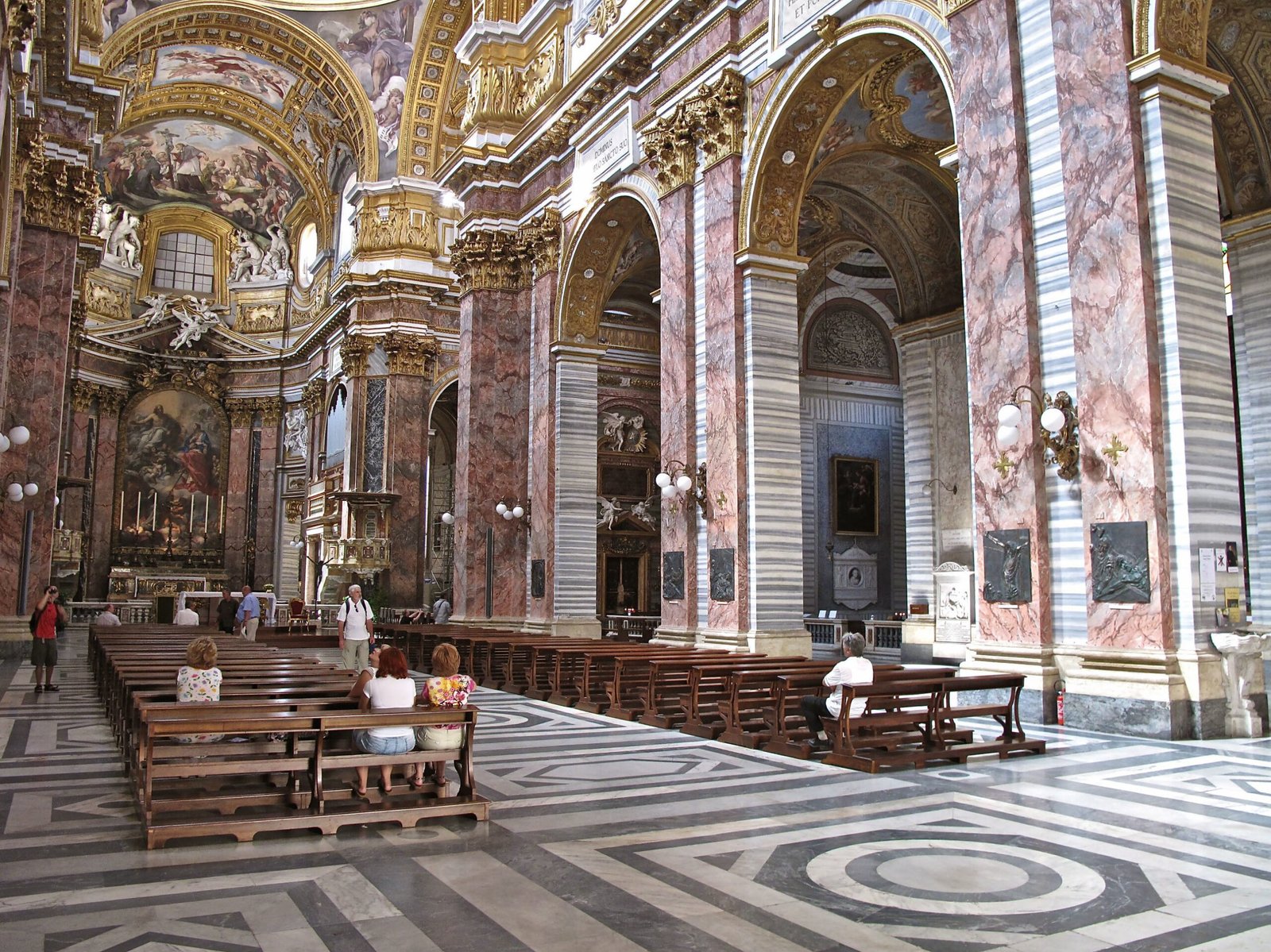The saying goes, “Imperfectly perfect”. Well, that stood true for Baroque architecture. Baroque came to English from a French word baroque and a Portuguese word Barocco, both meaning “irregularly shaped/ imperfect” (generally referring to pearls). Eventually, it was used to describe an extravagant style of art characterized by curving lines, gilt, and gold. It is often characterized by exaggerated motion and clear detail used to create drama, exuberance, and grandeur in sculpture, art, painting, architecture, literature, dance, and music. Baroque iconography was direct, obvious, and dramatic, intending to appeal above all to the senses and the emotions.
Baroque architecture is a highly decorative and theatrical style that appeared in Italy in the early 17tth century and gradually spread across Europe. It was originally introduced by the Catholic Church as a means to combat the Reformation and the Protestant church with a new architecture that inspired surprise and awe. This style used a lot of complex architectural plan shapes, based on the oval, and the dynamic opposition and interpretation of spaces to heighten the feeling of motion and sensuality. Some of its other characteristic qualities include grandeur, drama, contrast (especially in lighting), curvaceousness, and often an array of rich surface treatments, twisted elements, and gilded statuary.
The Early Baroque (1584-1625) was mainly dominated by Roman architects. Some of these notable works are Church of the Gesù by Giacomo Della Porta, facade and colonnade of St. Peter’s Basilica by Carlo Maderno, and the lavish Barberini Palace interiors by Pietro da Cortona. In France, the Luxembourg Palace built by Salomon de Brosse for Marie de Medici was an early example of the style.
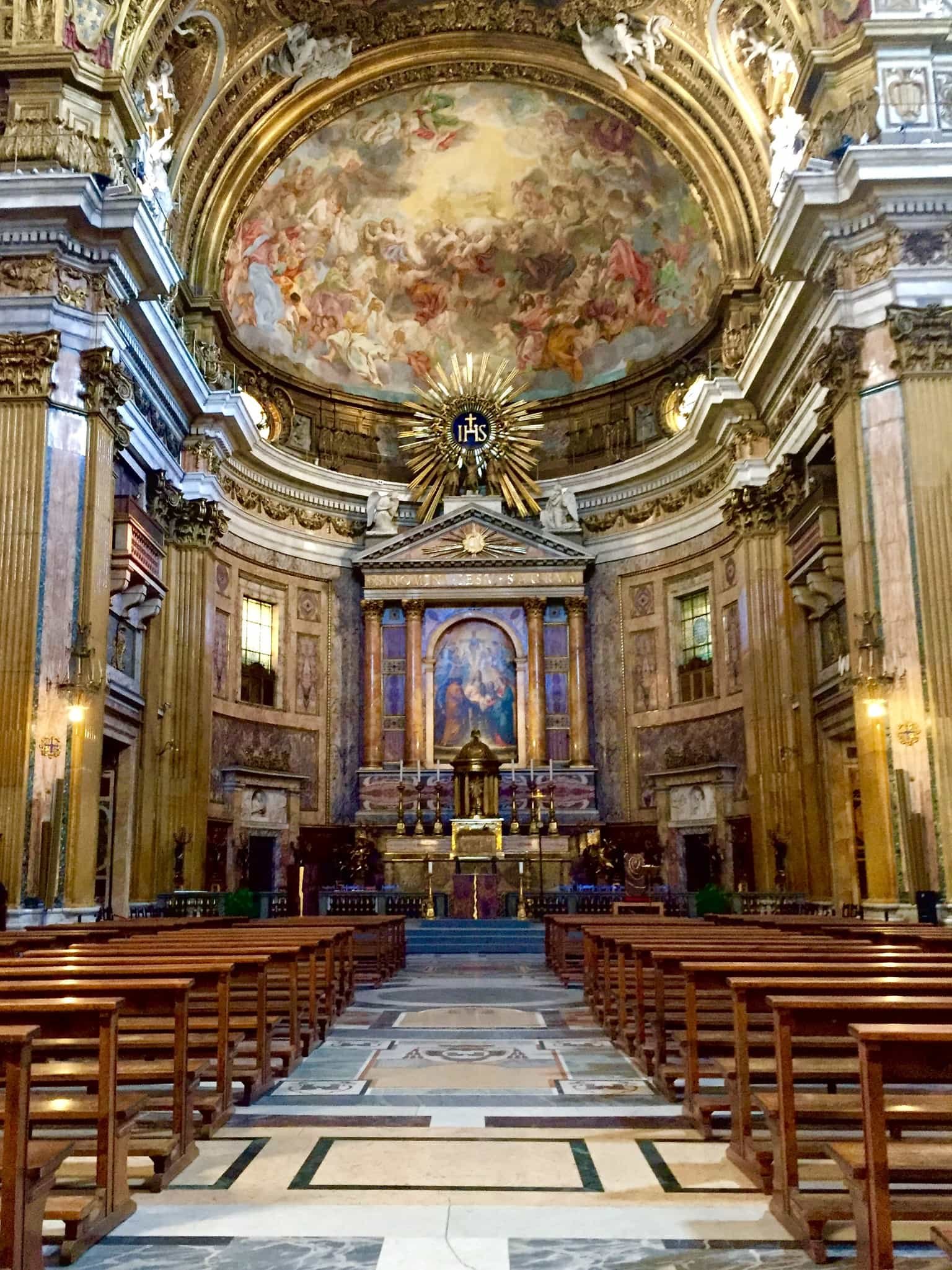
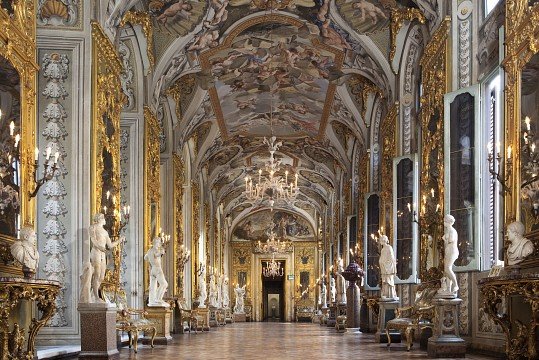
The High Baroque (1625-1675) gave us some major works in Rome by Pietro da Cortona, Francesco Borromini, and by the Gian Lorenzo Bernini. In Venice, the works included Santa Maria della Salute by Baldassare Longhena. Examples in France included the Pavillon de l’Horloge of the Louvre Palace by Jacques Lemercier, the Chapel of the Sorbonne by Jacques Lemercier, and the Château de Maisons by François Mansart.

The Late Baroque (1675-1750) saw the style spread to all parts of Europe, and the colonies of Spain and Portugal in the New World. National styles became more varied and distinct. In France, under Louis XIV, works included the Hall of Mirrors of the Palace of Versailles and the dome of Les Invalides. A much more ornate variant evolved in the late 18th century, known as Rocaille in France and then Rococo in Spain and Central Europe. The sculpted and painted decoration covered every space on the walls and ceiling. Its most celebrated architect was Balthasar Neumann, noted for the Basilica of the Fourteen Holy Helpers and the Wurzburg Residence. Another 18th-century variant that emerged was Lutheran Baroque art, exemplified by Dresden Frauenkirche.

Style and Characteristic of Baroque Architecture
This style comprises of dynamic designs and complex architectural plans, intended to heighten feelings of motion and sensuality, and frequently based on the oval. There is often a mixture of the repetition, break-up, and distortion of Renaissance classical motifs.
Some very common characteristics are:
- Grandeur
- Contrast
- Curves and twists.
- Rich surface treatments.
- Gilded statuary.
- Bright colours.
- Vividly painted ceilings.
- Fragmented or deliberately incomplete elements.
- Large-scale frescoes.
- Dramatic central projections on an external façade.
- Use of plaster or stucco, marble, or faux finishing.
- Illusory effects such as trompe l’oeil.
- Pear-shaped domes (more common in Eastern Europe baroque).
Notable Works
Some of the most notable practitioners during this period, in Italy, have been Gian Lorenzo Bernini, Carlo Maderno, and Francesco Borromini. Developing later, in Central Europe the most notable architect was Johann Bernhard Fischer von Erlach. In Britain, baroque was adopted and practised by Christopher Wren and Nicolas Hawksmoor.
Some of the most notable buildings incorporating the baroque style are:
Paul’s Cathedral, London.

St. Paul’s Cathedral, London Winter Palace, St. Petersburg.

Winter Palace, St. Petersburg Karlskirche, Vienna.

Karlskirche, Vienna Palace of Versailles, Versailles.

Palace of Versailles, Versailles Les Invalides, Paris.

Les Invalides, Paris Peter’s Square, Vatican City.

St. Peter’s Square, Vatican City - San Carlo alle Quattro Fontane, Rome.

San Carlo alle Quattro Fontane, Rome. John’s Co-Cathedral, Valletta, Malta.

St. John’s Co-Cathedral, Valletta, Malta.
